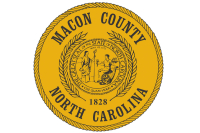Creation of the park was marked by triumph and tragedy
The creation of the Great Smoky Mountains National Park 75 years ago was nothing short of a miracle. The pitfalls were enormous and often narrowly skirted.
The battle for a park came close to defeat many times, yet park boosters fought and clawed their way to the finish line. It seemed they had fate on their side, delivering a needed push at all the right turning points.
Had the quest for a park come any earlier or later, it would have missed the rare coalescence of events that aligned in the decade leading up to the park’s creation in 1934.
“The odds were so extreme of it happening because of all the things that had to come together,” said Dan Pierce, a history professor at UNC-Asheville and author of The Great Smokies: From Natural History to National Park. “Essentially it couldn’t happen today.”
Park fathers realized early in their quest they would need a suitcase of different strategies depending on who they had to win over. On the national stage, the argument to save the Smokies was largely environmental.
The national parks of the West were in vogue among the elite. The desire to save grand landscapes and set aside natural wonders was not only understood, but proved to be a successful motivator. By the early 1920s, the Eastern politicians even developed a case of national park envy.
Related Items
“They thought ‘By God they have some big ones out West. We need one, too,’” said George Ellison, a naturalist and historian on the park who lives in Bryson City, N.C.
Another national motivator was the new pleasure of auto touring. A big roads movement was afoot, aimed at the vehicle as a form of recreation, Pierce said. Americans would need somewhere to drive their new cars.
The question quickly became not whether but where to put a national park in the East, Ellison said.
“The mountains were the only place you could do it. The population was too great elsewhere,” Ellison said.
But where in the mountains was another story.
In Western North Carolina, the leading site in the public’s eye was not in fact the Smokies, but Grandfather Mountain. Those inside the park movement, however, realized a park that straddled two states to include Tennessee would give them a stronger position: double the political clout on a national stage and double the fundraising.
Charles Webb, the publisher of the Asheville Citizen newspaper in the 1920s, orchestrated a shift in the region to support the Smoky Mountains instead. Webb would go on to play a critical role in creating the park, from convincing local people of its worth to driving fundraising.
“The paper really becomes a huge advocate for it and provides a publicity barrage,” Pierce said.
But park boosters also had to sway the Southern Appalachian National Park Commission, sanctioned by the Department of Interior to recommend the best site for a park. The Smokies initially wasn’t in the running. Armed with beautiful photos of the Smokies, boosters convinced the commission to at least visit the mountain range.
At the time, they were known simply as the Smoky Mountains. The word Great was slipped in as a clever bit of marketing genius, and possibly helped sway the National Park selection committee to recommend the Great Smoky Mountains National Park in 1925.
Park boosters still had to convince the nation at large that the Smokies had what it took to be a national park. That was accomplished in part by the photographs of George Masa and the words of Horace Kephart. The two roamed the mountains, capturing their eloquence and presenting it to the nation through brochures and newspaper articles.
Masa’s photos did for the Smokies what Ansel Adams did for the grand parks out West: inspire those who had never seen the mountains to want to save them. Their work even served a similar purpose locally.
“A lot of people had never been into the Smokies themselves, other than seen them from a distance so they didn’t even know what was there in many cases,” Pierce said.
While preservation was an effective motivator on the national stage, at home park boosters needed a different tack. “I think it was the first time they had heard that kind of notion of conservation articulated,” Ellison said.
The pitch to locals hinged on a promise of commerce. Create a park, and an influx of tourists will follow.
“The argument was one of economics, that this would be a huge economic benefit to the region,” Pierce said.
After all, it held true for the parks out West, whose ranks included the famed Yosemite, Yellowstone and Grand Canyon.
“If you look at the gateway community of essentially every national park, it became like it was touched with a wand of gold,” said Margaret Brown, Brevard College history professor and author of The Wild East, a leading park history.
But there was another hurdle to overcome. The Smokies were home to massive logging operations in the 1920s. The timber barons had bought up vast holdings and were furiously slashing their way up every holler and across every ridge. They were poised to clear-cut the entire Smokies — and nearly did.
Not only were the powerful timber barons a force to contend with for park boosters, but local people had become dependent on the market-based economy ushered in by the logging boom. Park proponents had to convince people that tourism could fill that void.
For park boosters, the creation of the Smokies became a race against time. Every day that passed, more timber fell, and the appeal of the park-to-be was diminished. But the devastation wrought by massive logging also helped rally support to “save the Smokies.”
“The Asheville Citizen did a series showing the contrast of beautiful areas and not very far away where cut-and-run logging practices had pretty much devastated [the landscape],” Pierce said.
Of course, people in the mountains at the time had little point of reference for a national park.
“They didn’t know what a national park was. Nobody did,” said Claude Douthit, 81, of Bryson City.
Only nine existed in the country at the time, and most were out West.
“I guess a lot of people didn’t have any idea what was going to happen,” said J.C. Freeman, 81, who was a boy in Swain County, N.C., at the time. “I had a couple aunts who had been to Yellowstone and came back talkin’ about the mud puddles and geysers a spewin’. I wasn’t sure if that’s what we’d be getting.”
Freeman was disappointed to learn not only would there be no geysers, but the romping and roaming he had enjoyed through the Smokies would actually be curtailed.
“They told us there wouldn’t be any hunting and fishing in the park. So I couldn’t see much advantage to having one,” Freeman said.
The high mountains not only served as a communal hunting and fishing ground, but also were used as an open range for livestock, free to roam and forage on the acorns and chestnuts.
“My grandfather would tell me stories about taking the cattle into the Smokies in the spring, going back a couple times a year to check on them and driving them back down in the fall,” said Bill Gibson, 61, who grew up in the shadow of the Smokies. People notched them and branded them to tell their animals apart.
While the businessmen and political leaders in Bryson City were pushing for the park, average people who relied on the high mountains for sustenance saw it differently.
“The business people were a little more educated and could see further out to where it would be an advantage,” said Commodore Casada, 99, of Bryson City. “People like me, I just felt like there was something being taken away. You could go hunt, fish, camp out anywhere, anytime you wanted with no limit on anything you caught or killed. I had taken that as a right for me, and I saw it as being taken away after the park was established.”
The concept of a national park was especially difficult to grasp for those being kicked off their farms.
“People thought ‘Well that’s foolish. We got this valley all cleared out and raising cattle and crops. Why do they need us to leave to make a place for people to loaf around in?’” said Hattie Caldwell Davis, whose home place and farm in Cataloochee Valley were claimed by the park. “When they made it into a park, everybody thought it was a disgrace.”
While park proponents were busy rallying support and raising money, a looming logistical problem lay ahead: buying up the land. The timber companies would not go quietly. They would want top dollar for their vast holdings and would be quick to turn to the courts.
And of course there were the thousands of rural people who lived in the park-to-be. Sure, the park had its share of rugged outposts and remote log cabins, but there were also well-established communities, replete with churches, stores and schools. Uprooting them would be no small thing.
The creation of the Great Smoky Mountains National Park would have to rely on the power of eminent domain for a novel purpose.
“This was the first time it had been used for recreational purposes, which isn’t an absolute, clear common good the way a road is,” Brown said.
There was a great debate over the boundary for the national park. Most settled areas lay in the valleys, so a park that took in only the high mountains would not be nearly as controversial. Initial maps indeed left out most of the settled valleys, targeting only the sparsely populated uplands dotted by remote cabins and hardscrabble farms.
“People living in marginal land were easier to make offers to, were easier to motivate,” Brown said.
But as the park movement progressed, lines were redrawn to take in a few well-to-do farming communities like Cataloochee in North Carolina and Cades Cove in Tennessee. Park boosters balked initially, but the National Park Service insisted.
“They said, ‘We honestly cannot make a park only on rugged, uphill land. We need to have some beautiful valleys for visitor centers and campgrounds,’” Brown said.
When word circulated that the park line had been expanded to claim Cataloochee, no one believed it, Davis said.
“They thought ‘No it was just a rumor. They will never take us here,’” Davis said. The valley remained in denial until a preacher announced the news in church one Sunday.
By then it was too late to orchestrate a resistance.
“There was already momentum to create a national park,” Brown said. “A lot of people in those communities were taken off guard.”
Whether the bait-and-switch was concerted is unknown. It was nonetheless effective. Had places like Cataloochee and Cades Cove been part of the map all along, rallying support for the park would have been much harder.
“The American people wouldn’t have allowed it to happen,” Brown said. “They would have said ‘These are the Jeffersonian communities that our country was built on.’”
The park service blunted the impact by promising no one would have to leave. While the park would buy the land, hundreds of families living within the park would be allowed to stay on their farms and lease it back from the park, the park service claimed. However, this was not a promise that was ultimately kept.
The logistical challenge to buy land dragged on for 12 years, much longer than park fathers anticipated. By the time they were done, the national park boundary claimed 1,132 small farms and forced the removal of more than 7,000 people.
While so many elements had to coalesce simultaneously, the most critical was money. Without it, no matter how much public or political support boosters could muster, there could be no park. Money, and lots of it, was needed to buy the land for the park. Park proponents estimated it would take $10 million.
The states of North Carolina and Tennessee each pledged $2 million toward the cause in 1927, contingent on the rest of the money being raised from private donors.
“Anyone who had big money at the time was hit up for a donation,” Pierce said.
The one who ultimately came through was the John D. Rockefeller Foundation, without which it is quite likely there would be no Great Smoky Mountains National Park. Rockefeller’s heirs laid down a whopping $5 million, and suddenly the park became possible.
That still left $1 million to raise, and park proponents turned to the public in the towns and cities surrounding the Smokies. An oft-repeated tale that captures the hard-fought nature of the park’s creation is that of local school children collecting spare pennies.
“I remember how the people took their pennies to school to help buy the land for the park,” said Douthit.
Generating enthusiasm for people to open their pockets proved difficult. Fundraising fell so far behind, that the National Park Committee nearly pulled the plug on the Smokies. The big daily newspapers in Asheville and Knoxville regularly browbeat the public into giving more and chastised them whenever fundraising stalled.
In exchange for a donation, people were given a signed National Park Founder’s Certificate, which stated as park founder they were “entitled to the particular respect and gratitude of visitors who through the years and ages will benefit by the vision and generosity of those who have made possible the preservation of the virgin forests and varied flora of the choicest section of the Southern Appalachian Mountains.”
Many of these prized certificates still exist in the mountains, squirreled away with family Bibles and records, passed down from one generation to the next. Joyce Patton, 75, of Canton, N.C., still has the Founder’s Certificate awarded to her mother. A school teacher in Sevierville, Tenn., during the park movement, Patton’s mother gave up a year’s salary for the creation of the park.
“I’m sure mother’s contribution was just a stone in the creek compared to what Rockefeller and others did, but for her it was all she had,” Patton said.
The regional fundraising fell short of its goal, however. Many who made pledges of support during the campaign failed to deliver in full.
“People pledged they would give $10,000 and then the Depression hit and they only gave $1,000,” Pierce said.
Ultimately, people in the mountains put up just $800,000 toward the park’s creation.
“There was more symbolic value than actual monetary value,” Pierce said. “It showed the politicians how people felt, that the park had widespread support by the people in the region and that they really wanted this.”
It also had another important side-effect: it made the Smokies “the people’s” park.
“It does give local people a lot of ownership or feeling of ownership that they helped make this happen,” Pierce said.
When it came time to collect on the promise of $2 million from each state, park proponents hit resistance.
“A lot of lawmakers who voted for it did so because they thought the park would never happen,” Pierce said. “They thought ‘I’ll vote for this and it will make me look good but we’ll never have to pay this money.’ But of course Rockefeller throws them a curve, and the states had to pay up.”
North Carolina Governor Angus McLean tried to backpedal on the funding in the late 1920s, forcing a contingent led by Charles Webb, the Asheville Citizen publisher, to travel to Raleigh and demand the Governor relinquish the money.
At the end of the day, however, park proponents still came up short. The cost of land for the park had exceeded their estimates. Once again, the park was nearly derailed, and once again it was saved. In 1933, President Franklin Roosevelt announced the government would contribute $1.5 million to finish buying the land.
By the time land purchases came together and Congress passed an act creating the Great Smoky Mountains National Park in 1934, the fight had been so long and so fraught with obstacles, it’s likely park boosters were amazed at their own success.
“We owe a lot to the people at that time who had the foresight and energy to do it,” Ellison said of the fight for the park’s creation. “If they had waited any later it wouldn’t have happened.”
There are so many what-ifs that the propitious intersection of events is hard to imagine. Even harder to imagine is a world without the Great Smoky Mountains National Park.









